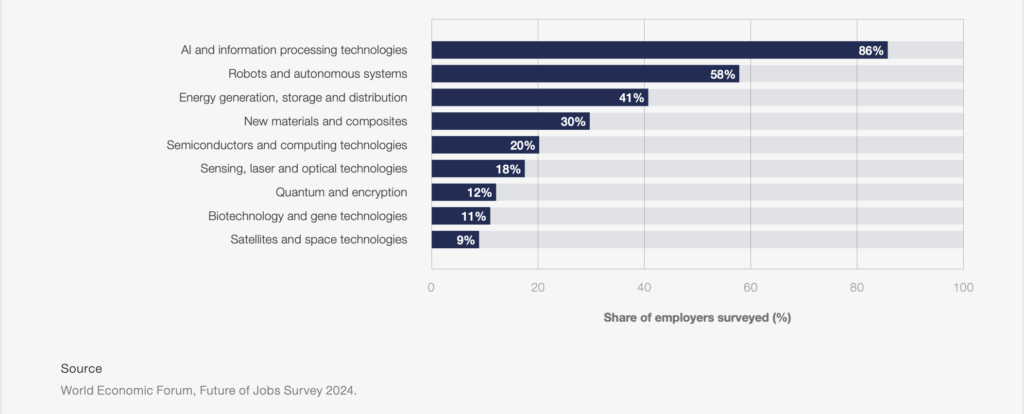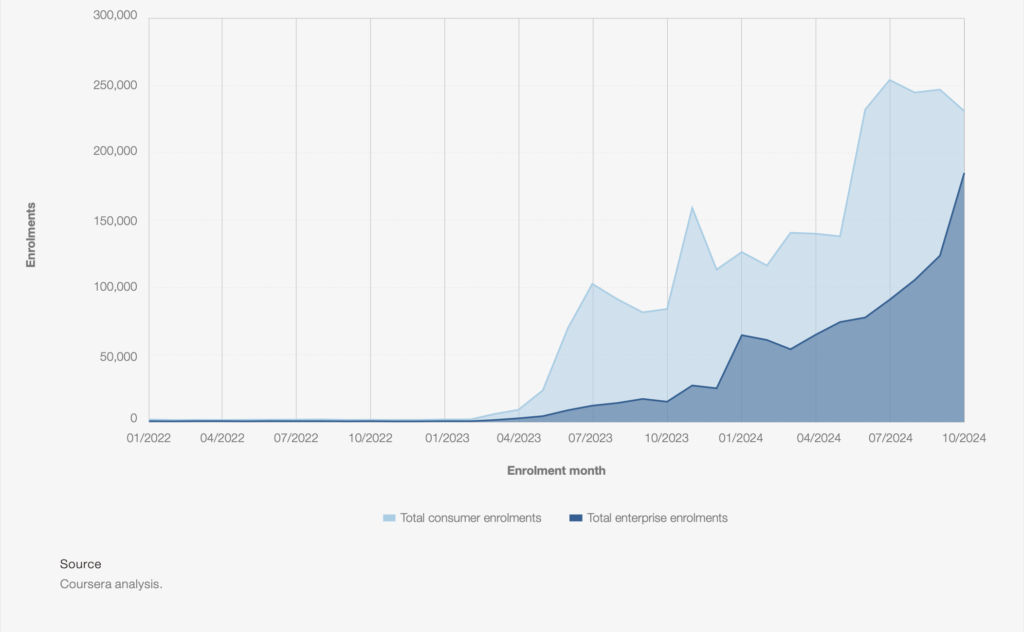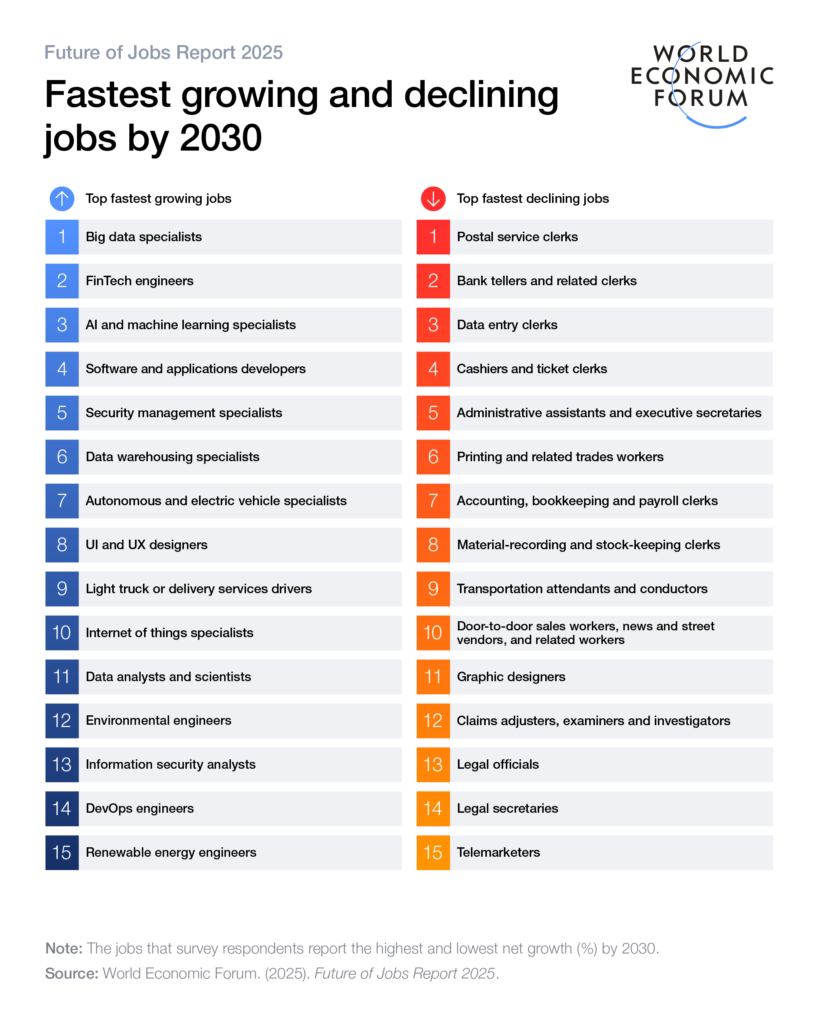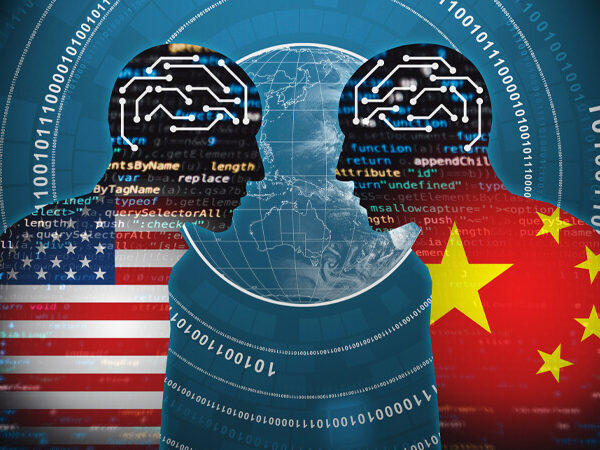As the world enters 2025, the global labor market is undergoing rapid transformation, driven by technological advancements, economic shifts, demographic changes, and the urgent need for sustainability. The World Economic Forum’s (WEF) Future of Jobs Report 2025 presents a comprehensive analysis of how these trends will impact job creation, skills demand, and workforce strategies from 2025 to 2030. Below are the critical insights from the report, highlighting the key takeaways and implications for businesses, employees, and policymakers.
Key Drivers of Labor Market Transformation
The report identifies five major macrotrends shaping the global workforce:
- Technological Change – The proliferation of artificial intelligence (AI), robotics, and automation will have a profound impact on job roles and required skills.
- Economic Uncertainty – Rising cost of living and fluctuating economic conditions will drive business model transformations.
- Green Transition – Climate change mitigation and adaptation efforts will create new job opportunities while phasing out others.
- Geoeconomic Fragmentation – Trade restrictions, supply chain realignments, and geopolitical tensions will reshape global labor markets.
- Demographic Shifts – Aging populations in some regions and growing working-age populations in others will lead to differing labor demands across the globe.
Technology trends driving business transformation, 2025-2030 (
Share of employers surveyed that identify the stated technology trend as likely to drive business transformation)

Job Growth and Decline Projections
By 2030, structural labor-market transformation is expected to lead to:
- 170 million new jobs created (14% of today’s total employment)
- 92 million jobs displaced (8% of total employment)
- Net growth of 78 million jobs (7% increase in global employment)
Fastest-Growing Jobs
- Technology-Driven Roles: AI and Machine Learning Specialists, Big Data Analysts, Software Developers, Fintech Engineers
- Green Economy Jobs: Renewable Energy Engineers, Environmental Engineers, Electric and Autonomous Vehicle Specialists
- Care Economy and Education: Nursing Professionals, Social Workers, Higher Education Teachers, Secondary Education Teachers
- Frontline Roles: Farmworkers, Delivery Drivers, Construction Workers, Salespersons, Food Processing Workers

Fastest-Declining Jobs
- Clerical and Administrative Roles: Data Entry Clerks, Administrative Assistants, Bank Tellers, Postal Service Clerks
- Retail and Customer Service: Cashiers and Ticket Clerks, Telemarketers
- Manufacturing and Factory Roles: Assembly Line Workers, Printing and Related Trades Workers

The Future of Skills
A significant transformation in skill requirements is anticipated, with 39% of core job skills changing by 2030. The top skills expected to be in demand include:
Fastest-Growing Skills:
- Cognitive and Problem-Solving Skills: Analytical Thinking, Creative Thinking, Systems Thinking
- Technology and Data Skills: AI and Big Data, Networks and Cybersecurity, Technological Literacy
- Self-Efficacy and Adaptability: Resilience, Flexibility, Agility, Curiosity and Lifelong Learning
- Human-Centric Skills: Leadership and Social Influence, Talent Management, Emotional Intelligence
Declining Skills:
- Manual Dexterity, Endurance, and Precision
- Reading, Writing, and Mathematics (as automation takes over routine tasks)
- Dependability and Attention to Detail (reduced due to AI automation)
Automation and the Human-Machine Frontier
By 2030, employers predict that:
- 33% of tasks will be performed by AI and machines (up from 22% in 2025)
- 33% will be human-machine collaborations
- 34% will remain human-exclusive tasks
AI and automation will play a growing role in enhancing efficiency, but human-centric roles requiring problem-solving, leadership, and creativity will remain critical.
Workforce Strategies for the Future
To navigate these shifts, businesses are prioritizing several workforce strategies:
- Upskilling and Reskilling (85%) – The majority of employers plan to invest in training to bridge skill gaps.
- Process Automation (73%) – Companies will accelerate automation to improve efficiency.
- Hiring for New Skills (70%) – Organizations will seek fresh talent with expertise in emerging fields.
- Internal Talent Mobility (51%) – Employees will be transitioned from declining to growing job roles.
- Workforce Reductions (41%) – Businesses anticipate layoffs in response to skills becoming obsolete.
Talent Attraction and Public Policy Recommendations
Employers report growing concerns about talent shortages, with 42% expecting a decline in talent availability. To address this, they are adopting strategies such as:
- Supporting Employee Well-Being (64%) – Prioritizing mental health and work-life balance.
- Providing Upskilling and Career Progression Opportunities (63%) – To retain and attract workers.
- Offering Higher Wages (50%) – To remain competitive in the job market.
Top Public Policy Recommendations:
- Government-Funded Reskilling Programs (55%) – To ensure workers can transition into new roles.
- Improvements in Public Education Systems (47%) – Aligning education with future job market needs.
- Flexibility in Hiring and Wage Policies (44%) – Allowing businesses to adapt to changing demands.
Conclusion: Preparing for the Future of Work
The WEF Future of Jobs Report 2025 highlights both opportunities and challenges in the evolving labor market. While automation and AI will redefine traditional roles, they will also create new job opportunities in technology, green industries, and human-centric professions. To stay ahead, businesses must invest in upskilling, governments must support workforce transitions, and employees must continuously adapt to the changing skills landscape.
The key to success in this new era of work lies in lifelong learning, adaptability, and collaboration between businesses, policymakers, and workers to build a resilient and future-ready global workforce.
See the full report: Future of Jobs Report 2025




